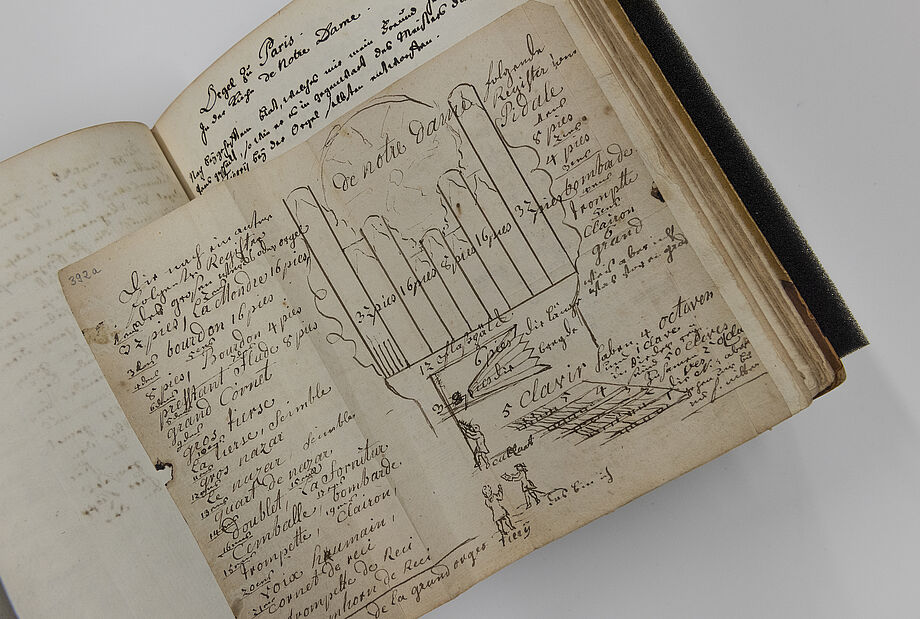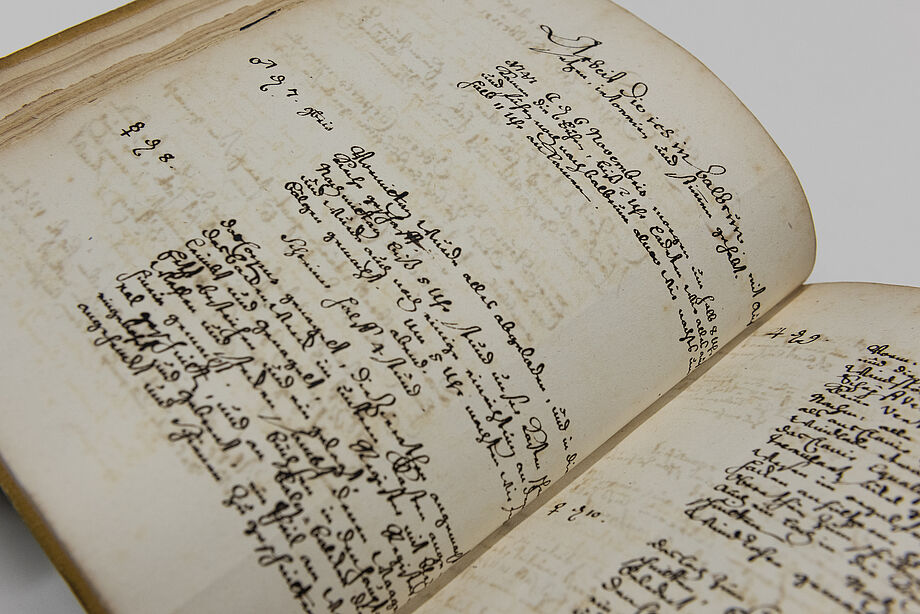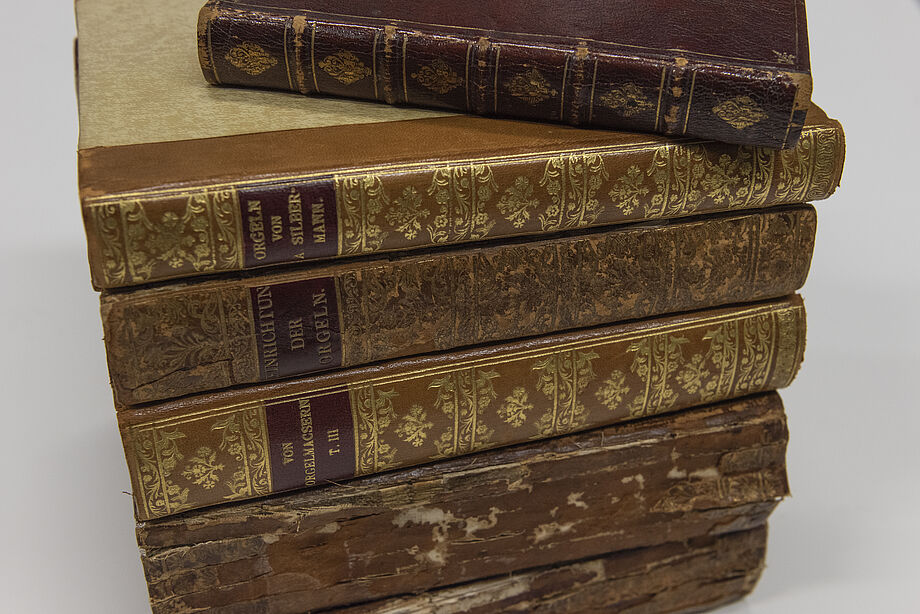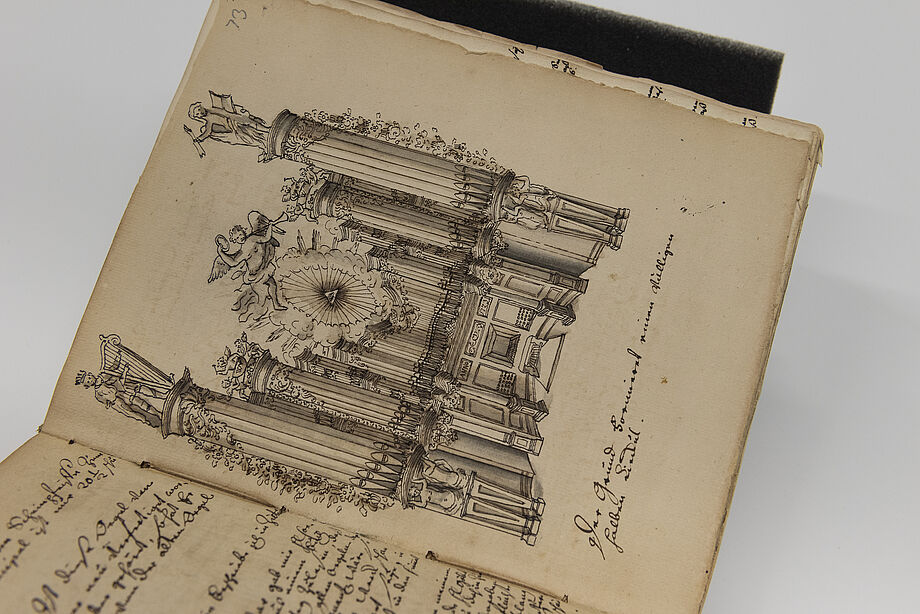The "Silbermann Archive
"Silbermann" - this sounds familiar to many and evokes associations of great music on great instruments. However, depending on the geographical location,"Silbermann" means quite different historical persons and artefacts. Silbermann" - this has an identity-forming effect in several regions.

The Silbermann organ-building dynasty had been active in the Alsace region since Andreas Silbermann set up his workshop in Strasbourg at the beginning of the 18th century, as well as in the central German region with Gottfried Silbermann and his Freiberg workshop. There was a lively exchange between the two regionally different styles: Gottfried learned in Andreas' workshop and brought French-inspired elements to Saxony, Andreas' son Johann Andreas visited Gottfried on a long educational trip and took Saxon aspects back to the workshop he took over from his father.
To this day, Silbermann organs are considered unsurpassed here and there.
Johann Andreas Silbermann played a decisive role in shaping Germany's legendary organ building nationwide. The acquisition of his archive provides a unique insight into the sophisticated facets of this craftsmanship in the 18th century. Making these important cultural-historical sources visible to the public is not only a great opportunity for the Saxon State Library, but also a significant gain for the German library and museum landscape as a whole. That is why I was very happy to support the purchase with funds from my cultural budget.
(Monika Grütters, Federal Government Commissioner for Culture and the Media)

But what is their secret? What makes them so special? Well, a few details may be revealed by the handwritten comments and annotations of Johann Andreas Silbermann, who not only documents his own work but also extensively evaluates organs of other instrument makers.
With the Silbermann Archive, one of the most important personalities in the history of the European organ has left behind a treasure that is historically without parallel. The records of Johann Andreas Silbermann are not only a unique document of Baroque organ building. The fact that the Saxon State Library has already put the 2,000 pages online will also attract numerous local, craft, music, economic and church historians to its website, not only from Germany. It is a great pleasure for me that we were again able to contribute, as we did with the acquisition of the Silbermann travel diary.
(Prof. Dr. Markus Hilgert, Secretary General of the Kulturstiftung der Länder)

Six volumes have survived with these notes, extremely rare in their detail, which convey Johann Andreas' impressions and views, and at the same time integrate the Silbermanns' family knowledge of organ building.
Thus this so-called "Silbermann Archive", created between the 1720s and 1780s, is a treasure trove for culture and science.
The so-called Silbermann Archive acquired by the SLUB is a central source on 18th century organ building, in which the knowledge of Johann Andreas Silbermann and his family is vividly documented. It reflects not only Alsatian but also Saxon craftsmanship traditions and is thus optimally preserved in the SLUB and in Saxony as a land of organ and instrument building. Statements on organs in Salzburg, Paris, Amsterdam, Florence and many other cities, demonstrate the European network of the Silbermann family and their curiosity to learn about different expressions of organ building. I am pleased that the SLUB has today made the new acquisition available digitally, thus making it directly accessible to all interested parties worldwide.
(Barbara Klepsch, Saxon State Minister for Culture and Tourism)

Johann Andreas Silbermann, whose curiosity and passion for instrument building is palpable on practically every page, created personal descriptions of 35 of his father's organs, described 31 instruments that he had built himself, and compiled details on nearly 250 instruments from all over Europe. In the volume "Von den Orgelmachern", Silbermann brings together biographical notes on a good 180 colleagues, expresses appreciation and criticism and describes personal encounters. Here Silbermann's character is revealed and his humour sparkles. A volume of dedicated business notes provides detailed information on adequate materials and their costs as well as on craftsmanship. Glued-in letters, technical sketches and copper engravings show how Silbermann gathered his knowledge.
The music department of the SLUB Dresden has now been able to take over the estate of the organ-building family, the "Silbermann Archive", into its holdings and make it digitally accessible.
Only a few years after acquiring Johann Andreas Silbermann's travel diary, the Ernst von Siemens Kunststiftung is participating in another important purchase: the second volume of the Silbermann Archive is of particular interest to the acquiring art foundation, as it contains a large number of detailed organ drawings.
(Dr. Martin Hoernes, Secretary General of the Ernst von Siemens Art Foundation)
Organ building and organ music are part of the UNESCO list of intangible cultural heritage. Saxon organ builders were influential in shaping the school and style of organ building. It is of inestimable value for scholarship that we now have both sources, the Silbermann diary and the archive, together and permanently in public possession. I thank all the partners who contributed to securing these important sources.
(Dr. Achim Bonte, Director General of the SLUB)
The Silbermann organ-building dynasty had been active in the Alsace region since Andreas Silbermann set up his workshop in Strasbourg at the beginning of the 18th century, as well as in the central German region with Gottfried Silbermann and his Freiberg workshop. There was a lively exchange between the two regionally different styles: Gottfried learned in Andreas' workshop and brought French-inspired elements to Saxony, Andreas' son Johann Andreas visited Gottfried on a long educational trip and took Saxon aspects back to the workshop he took over from his father.
To this day, Silbermann organs are considered unsurpassed here and there.
But what is their secret? What makes them so special? Well, a few details may be revealed by the handwritten comments and annotations of Johann Andreas Silbermann, who not only documents his own work but also extensively evaluates organs of other instrument makers.

Six volumes have survived with these notes, extremely rare in their detail, which convey Johann Andreas' impressions and views, and at the same time integrate the Silbermanns' family knowledge of organ building.
Thus this so-called "Silbermann archive", created between the 1720s and 1780s, is a treasure trove for culture and science.
Johann Andreas Silbermann, whose curiosity and passion for instrument building is palpable on practically every page, created descriptions in his own hand of 35 of his father's organs, described 31 instruments he had built himself, and compiled details on nearly 250 instruments from all over Europe. In the volume "Von den Orgelmachern", Silbermann brings together biographical notes on a good 180 colleagues, expresses appreciation and criticism and describes personal encounters. Here Silbermann's character is revealed and his humour sparkles. A volume of dedicated business notes provides detailed information on adequate materials and their costs as well as on craftsmanship. Glued-in letters, technical sketches and copper engravings show how Silbermann gathered his knowledge.
